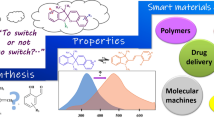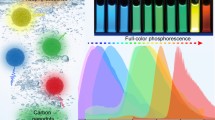Abstract
Vesicles constructed of either synthetic polymers alone (polymersomes) or a combination of polymers and lipids (lipo-polymersomes) demonstrate excellent long-term stability and ability to integrate membrane proteins. Applications using lipo-polymersomes with integrated membrane proteins require suitable supports to maintain protein functionality. Using lipo-polymersomes loaded with the light-driven proton pump bacteriorhodopsin (BR), we demonstrate here how the photocurrent is influenced by a chosen support. In our study, we deposited BR-loaded lipo-polymersomes in a cross-linked polyelectrolyte multilayer assembly either directly physisorbed on gold electrode microchips or cross-linked on an intermediary polyethersulfone (PES) membrane covalently grafted using a hydrogel cushion. In both cases, electrochemical impedance spectroscopic characterization demonstrated successful polyelectrolyte assembly with BR-loaded lipo-polymersomes. Light-induced proton pumping by BR-loaded lipo-polymersomes in the different support constructs was characterized by amperometric recording of the generated photocurrent. Application of the hydrogel/PES membrane support together with the polyelectrolyte assembly decreased the transient current response upon light activation of BR, while enhancing the generated stationary current to over 700 nA/cm2. On the other hand, the current response from BR-loaded lipo-polymersomes in a polyelectrolyte assembly without the hydrogel/PES membrane support was primarily a transient peak combined with a low-nanoampere-level stationary photocurrent. Hence, the obtained results demonstrated that by using a hydrogel/PES support it was feasible to monitor continuously light-induced proton flux in biomimetic applications of lipo-polymersomes.

Graphical abstract





Similar content being viewed by others
References
Eytan GD. Use of liposomes for reconstitution of biological functions. Biochim Biophys Acta. 1982;694:185–202.
Seddon AM, Curnow P, Booth PJ. Membrane proteins, lipids and detergents: not just a soap opera. Biochim Biophys Acta. 1666;2004:105–17.
Discher DE, Eisenberg A. Polymer vesicles. Science. 2002;297:967–73.
Taubert A, Napoli A, Meier W. Self-assembly of reactive amphiphilic block copolymers as mimetics for biological membranes. Curr Opin Chem Biol. 2004;8:598–603.
Nam J, Beales PA, Vanderlick TK. Giant phospholipid/block copolymer hybrid vesicles: mixing behavior and domain formation. Langmuir. 2011;27:1–6.
Nam J, Vanderlick TK, Beales PA. Formation and dissolution of phospholipid domains with varying textures in hybrid lipo-polymersomes. Soft Matter. 2012;8:7982–8.
Nallani M, Andreasson-Ochsner M, Tan C-WD, Sinner E-K, Wisantoso Y, Geifman-Shochat S, et al. Proteopolymersomes: in vitro production of a membrane protein in polymersome membranes. Biointerphases. 2011;6:153–7.
May S, Andreasson-Ochsner M, Fu Z, Low YX, Tan D, de Hoog H-PM, et al. In vitro expressed GPCR inserted in polymersome membranes for ligand-binding studies. Angew Chem Int Ed. 2013;52:749–53.
Choi H-J, Montemagno CD. Artificial organelle: ATP synthesis from cellular mimetic polymersomes. Nano Lett. 2005;5:2538–42.
Chandrawati R, Caruso F. Biomimetic liposome- and polymersome-based multicompartmentalized assemblies. Langmuir. 2012;28:13798–807.
Discher DE, Ahmed F. Polymersomes. Annu Rev Biomed Eng. 2006;8:323–41.
Lee JS, Feijen JJ. Polymersomes for drug delivery: design, formation and characterization. Control Release. 2012;161:473–83.
Langowska K, Palivan CG, Meier W. Polymer nanoreactors shown to produce and release antibiotics locally. Chem Commun. 2013;49:128–30.
Ho D, Chu B, Lee H, Brooks EK, Kuo K, Montemagno CD. Fabrication of biomolecule–copolymer hybrid nanovesicles as energy conversion systems. Nanotechnol. 2005;16:3120–32.
Picart C. Polyelectrolyte multilayer films: from physico-chemical properties to the control of cellular processes. Curr Med Chem. 2008;15:685–97.
Kochan J, Wintgens T, Wong JE, Melin T. Polyelectrolyte-modified polyethersulfone ultrafiltration membranes for wastewater treatment applications. Desalin Water Treat. 2009;9:175–80.
Volodkin D, von Klitzing R, Moehwald H. Polyelectrolyte multilayers: towards single cell studies. Polymers. 2014;6:1502–27.
Ai H, Jones SA, Lvov YM. Biomedical applications of electrostatic layer-by-layer nano-assembly of polymers, enzymes, and nanoparticles. Cell Biochem Biophys. 2003;39:23–43.
Tang Z, Wang Y, Podsiadlo P, Kotov NA. Biomedical applications of layer-by-layer assembly: from biomimetics to tissue engineering. Adv Mater. 2006;18:3203–24.
Spricigo R, Dronov R, Lisdat F, Leimkühler S, Scheller FW, Wollenberger U. Electrocatalytic sulfite biosensor with human sulfite oxidase co-immobilized with cytochrome c in a polyelectrolyte-containing multilayer. Anal Bioanal Chem. 2009;393:225–33.
Gribova V, Auzely-Velty R, Picart C. Polyelectrolyte multilayer assemblies on materials surfaces: from cell adhesion to tissue engineering. Chem Mater. 2012;24:854–69.
He J-A, Samuelson L, Li L, Kumar J, Tripathy SK. Photoelectric properties of oriented bacteriorhodopsin/polycation multilayers by electrostatic layer-by-layer assembly. J Phys Chem B. 1998;102:7067–72.
Saab M-B, Estephan E, Cloitre T, Legros R, Cuisinier FJG, Zimányi L, et al. Assembly of purple membranes on polyelectrolyte films. Langmuir. 2009;25:5159–67.
Michel M, Vautier D, Voegel J-C, Schaaf P, Ball V. Layer by layer self-assembled polyelectrolyte multilayers with embedded phospholipid vesicles. Langmuir. 2004;20:4835–9.
Coustet M, Irigoyen J, Garcia TA, Murray RA, Romero G, Cortizo MS, et al. Layer-by-layer assembly of polymersomes and polyelectrolytes on planar surfaces and microsized colloidal particles. J Colloid Interface Sci. 2014;421:132–40.
Childs RF, Mika AM, Pandey AK, McCrory C, Mouton S, Dickson JM. Nanofiltration using pore-filled membranes: effect of polyelectrolyte composition on performance. Sep Purif Technol. 2001;22–23:507–17.
Malaisamy R, Bruening ML. High-flux nanofiltration membranes prepared by adsorption of multilayer polyelectrolyte membranes on polymeric supports. Langmuir. 2005;21:10587–92.
Ng LY, Mohammad AW, Ng CY. A review on nanofiltration membrane fabrication and modification using polyelectrolytes: effective ways to develop membrane selective barriers and rejection capability. Adv Colloid Interf Sci. 2013;197–198:85–107.
Sun G, Chung T-S, Jeyaseelan K, Armugam A. A layer-by-layer self-assembly approach to developing an aquaporin-embedded mixed matrix membrane. RSC Adv. 2013;3:473–81.
Zhang W, Zhao Q, Yuan J. Porous polyelectrolytes: the interplay of charge and pores for new functionalities. Angew Chemie Int Ed. 2018;57:6754–73.
Oesterhelt D, Stoeckenius W. Functions of a new photoreceptor membrane. Proc Natl Acad Sci U S A. 1973;70:2853–7.
Herrmann TR, Rayfield GW. The electrical response to light of bacteriorhodopsin in planar membranes. Biophys J. 1978;21:111–25.
Bamberg E, Apell H-J, Dencher NA, Sperling W, Stieve H, Läuger P. Photocurrents generated by baeteriorhodopsin on planar bilayer membranes. Biophys Struct Mech. 1979;5:277–92.
Steinem C, Janshoff A, Höhn F, Sieber M, Galla HJ. Proton translocation across bacteriorhodopsin containing solid supported lipid bilayers. Chem Phys Lipids. 1997;89:141–52.
Horn C, Steinem C. Photocurrents generated by bacteriorhodopsin adsorbed on nano-black lipid membranes. Biophys J. 2005;89:1046–54.
Schmitt EK, Nurnabi M, Bushby RJ, Steinem C. Electrically insulating pore-suspending membranes on highly ordered porous alumina obtained from vesicle spreading. Soft Matter. 2008;4:250–3.
Brumfeld V, Miller IR. Effect of membrane potential on the conformation of bacteriorhodopsin reconstituted in lipid vesicles. Biophys J. 1988;54:747–50.
Nielsen CH. Biomimetic membranes for sensor and separation applications. Anal Bioanal Chem. 2009;395:697–718.
Lee H, Ho D, Kuo K, Montemagno CD. Vectorial insertion of bacteriorhodopsin for directed orientation assays in various polymeric biomembranes. Polymer. 2006;47:2935–41.
Palanco ME, Skovgaard N, Hansen JS, Berg-Sørensen K, Hélix-Nielsen C. Tuning biomimetic membrane barrier properties by hydrocarbon, cholesterol and polymeric additives. Bioinspir Biomim. 2018;13:016005.
Birge RR. Photophysics and molecular electronic applications of the rhodopsins. Annu Rev Phys Chem. 1990;41:683–733.
Miyasaka T, Koyama K, Itoh I. Quantum conversion and image detection by a bacteriorhodopsin-based artificial photoreceptor. Science. 1992;255:342–4.
Li R, Li CM, Bao H, Bao Q, Lee VS. Stationary current generated from photocycle of a hybrid bacteriorhodopsin/quantum dot bionanosystem. Appl Phys Lett. 2007;91:223901.
Kim YJ, Neuzil P, Nam C-H, Engelhard M. Deposition of bacteriorhodopsin protein in a purple membrane form on nitrocellulose membranes for enhanced photoelectric response. Sensors. 2013;13:455–62.
Oesterhelt D, Stoeckenius W. Isolation of the cell membrane of halobacterium halobium and its fractionation into red and purple membrane. Methods Enzymol. 1974;31:667–78.
Mech-Dorosz A, Heiskanen A, Bäckström S, Perry M, Muhammad HB, Hélix-Nielsen C, et al. A reusable device for electrochemical applications of hydrogel supported black lipid membranes. Biomed Microdevices. 2015. https://doi.org/10.1007/s10544-015-9936-y.
Heiskanen AR, Spégel CF, Kostesha N, Ruzgas T, Emnéus J. Monitoring of Saccharomyces cerevisiae cell proliferation on thiol-modified planar gold microelectrodes using impedance spectroscopy. Langmuir. 2008;24:9066–73.
Fischer LM, Tenje M, Heiskanen AR, Masuda N, Castillo J, Bentien A, et al. Gold cleaning methods for electrochemical detection applications. Microelectron Eng. 2009;86:1282–5.
Han S, Lindholm-Sethson B. Electrochemistry at ultrathin polyelectrolyte films self-assembled at planar gold electrodes. Electrochim Acta. 1999;45:845–53.
Pardo-Yissar V, Katz E, Lioubashevski O, Willner I. Layered polyelectrolyte films on au electrodes: characterization of electron-transfer features at the charged polymer interface and application for selective redox reactions. Langmuir. 2001;17:1110–8.
Silva TH, Garcia-Morales V, Moura C, Manzanares JA, Silva F. Electrochemical impedance spectroscopy of polyelectrolyte multilayer modified gold electrodes: influence of supporting electrolyte and temperature. Langmuir. 2005;21:7461–7.
Justin G, Finley S, Rahman ARA, Guiseppi-Elie A. Biomimetic hydrogels for biosensor implant biocompatibility: electrochemical characterization using micro-disc electrode arrays (MDEAs). Biomed Microdevices. 2009;11:103–15.
Yang L, Guiseppi-Wilson A, Guiseppi-Elie A. Design considerations in the use of interdigitated microsensor electrode arrays (IMEs) for impedimetric characterization of biomimetic hydrogels. Biomed Microdevices. 2011;13:279–89.
Kibrom A, Roskamp RF, Jonas U, Menges B, Knoll W, Paulsen H, et al. Hydrogel-supported protein-tethered bilayer lipid membranes: a new approach toward polymer-supported lipid membranes. Soft Matter. 2011;7:237–46.
Randles JEB. Kinetics of rapid electrode reactions. Discuss Faraday Soc. 1947;1:11–9.
Tong W, Gao C, Möhwald H. Manipulating the properties of polyelectrolyte microcapsules by glutaraldehyde cross-linking. Chem Mater. 2005;17:4610–6.
Bard AJ, Faulkner LR. Electrochemical methods: fundamentals and applications. 2nd ed. Hoboken: Wiley; 2001.
Reviakine I, Brisson A. Formation of supported phospholipid bilayers from unilamellar vesicles investigated by atomic force microscopy. Langmuir. 2000;16:1806–15.
Jayakrishnan A, Jameela SR. Glutaraldehyde as a fixative in bioprostheses and drug delivery matrices. Biomaterials. 1996;17:471–84.
Brug GJ, van den Eden ALG, Sluyters-Rehbach M, Sluyters JH. The analysis of electrode impedances complicated by the presence of a constant phase element. J Electroanal Chem. 1984;176:275–95.
Hirschorn B, Orazem ME, Tribollet B, Vivier V, Frateur I, Musiani M. Determination of effective capacitance and film thickness from constant-phase-element parameters. Electrochim Acta. 2010;55:6218–27.
Nagel G, Möckel B, Büldt G, Bamberg E. Functional expression of bacteriorhodopsin in oocytes allows direct measurement of voltage dependence of light induced H+ pumping. FEBS Lett. 1995;377:263–6.
Chen X-R, Huang Y-C, Yi H-P, Yang C-S. A unique light-driven proton transportation signal in halorhodopsin from Natronomonas Pharaonis. Biophys J. 2016;111:2600–7.
Acknowledgments
This work was financially supported by the Copenhagen Research School of Nanotechnology (CONT) in Denmark, and the cleantech company Aquaporin A/S in Copenhagen, Denmark. Nanna Bild from DTU Healthtech is acknowledged for the artwork in Fig. 1.
Author information
Authors and Affiliations
Corresponding author
Ethics declarations
Conflict of interest
The authors declare that they have no conflicts of interest.
Human and/or animal participation
The studies presented in this article comprise neither human nor animal participation.
Additional information
Publisher’s note
Springer Nature remains neutral with regard to jurisdictional claims in published maps and institutional affiliations.
Published in the topical collection featuring Female Role Models in Analytical Chemistry.
Rights and permissions
About this article
Cite this article
Mech-Dorosz, A., Bajraktari, N., Hélix-Nielsen, C. et al. Stationary photocurrent generation from bacteriorhodopsin-loaded lipo-polymersomes in polyelectrolyte multilayer assembly on polyethersulfone membrane. Anal Bioanal Chem 412, 6307–6318 (2020). https://doi.org/10.1007/s00216-020-02533-8
Received:
Revised:
Accepted:
Published:
Issue Date:
DOI: https://doi.org/10.1007/s00216-020-02533-8




